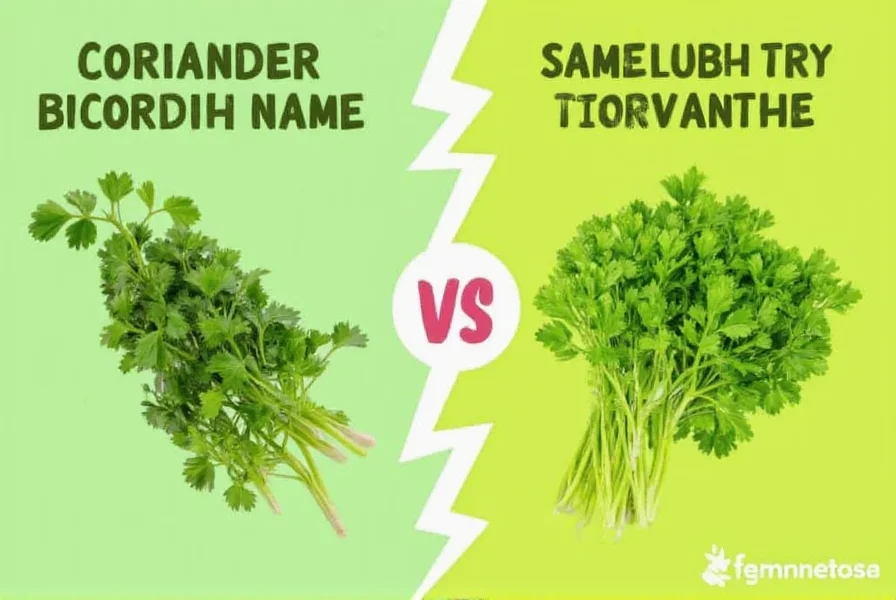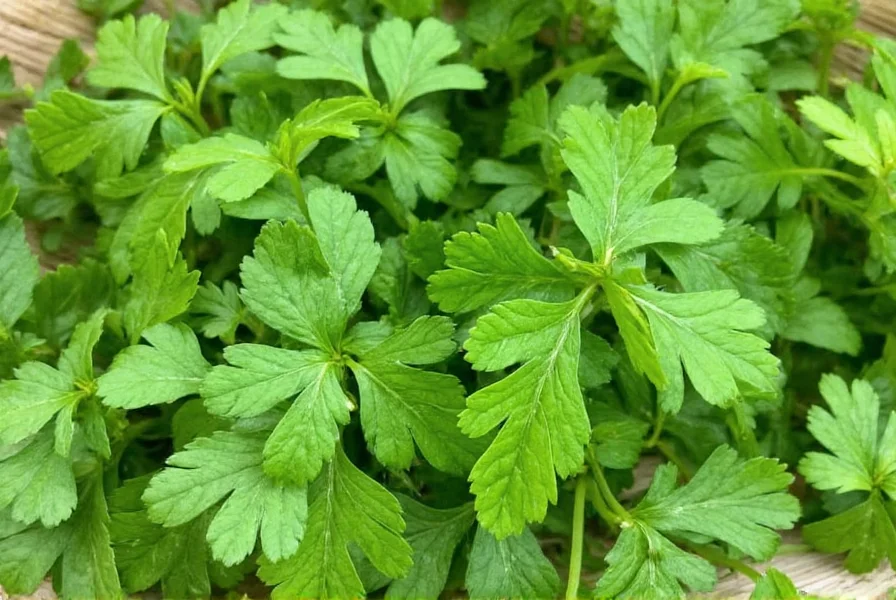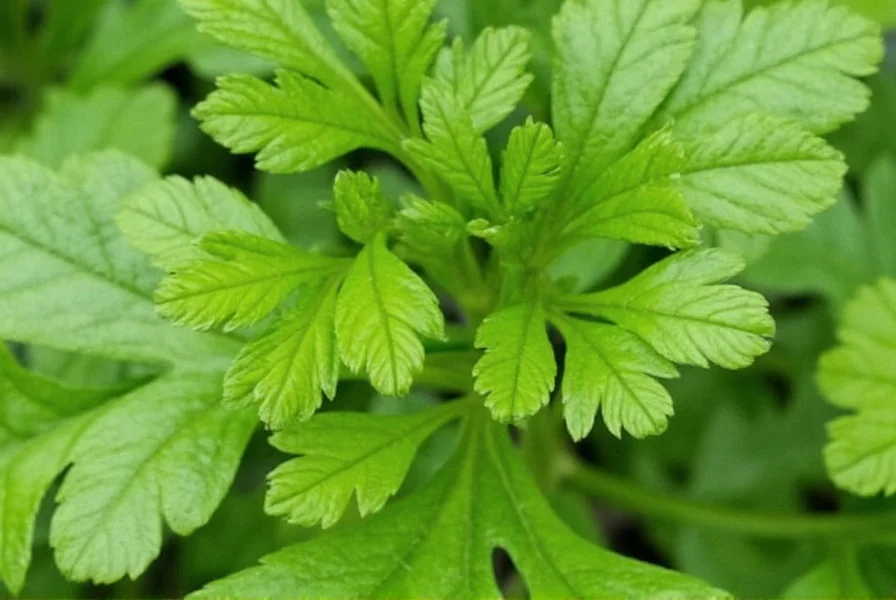When exploring coriander coriander terminology, it's crucial to recognize this common point of confusion in culinary circles. The plant produces two distinct edible components with different flavor profiles and uses. Coriander seeds offer warm, citrusy notes ideal for spice blends, while fresh cilantro leaves provide a bright, herbaceous flavor that enhances salsas and Asian dishes.
Botanical Background of Coriander
Coriandrum sativum, commonly known as coriander, belongs to the Apiaceae family alongside parsley, carrots, and celery. This annual herb grows 12-24 inches tall with lacy leaves and produces small spherical seeds that ripen to a yellow-brown color. The plant thrives in temperate climates and completes its life cycle within one growing season.
Understanding the difference between coriander and cilantro begins with recognizing they come from the same plant but represent different harvest stages. The terminology varies significantly by region, creating confusion for home cooks and professional chefs alike.

Regional Terminology Explained
The terminology divide follows distinct geographical patterns:
| Region | Leaves Called | Seeds Called |
|---|---|---|
| United States | Cilantro | Coriander |
| United Kingdom | Coriander | Coriander seeds |
| India | Dhaniya (leaves) | Dhaniya (seeds) |
| Mexico | Cilantro | Coriandolo |
This regional variation explains why many people search for coriander coriander when trying to clarify the terminology. Recipe writers sometimes fail to specify which part they mean, leading to cooking errors and flavor disappointments.
Culinary Applications of Coriander Components
Each part of the coriander plant serves unique purposes in global cuisines. Knowing how to use coriander seeds in cooking versus fresh leaves transforms ordinary dishes into authentic culinary experiences.
Coriander Seeds
These oval-shaped seeds deliver earthy, citrusy notes that intensify when toasted. Professional chefs recommend dry-roasting whole seeds before grinding to maximize flavor. Ground coriander appears in curry blends, pickling spices, and baked goods. The health benefits of coriander seeds include digestive support and anti-inflammatory properties.
Cilantro Leaves
Fresh cilantro leaves provide a bright, citrusy flavor that enhances salsas, chutneys, and Southeast Asian dishes. Unlike most herbs, cilantro's flavor diminishes with cooking, so chefs add it at the end of preparation. Approximately 21% of people experience a soapy taste due to genetic variation in olfactory receptors—a phenomenon known as why does cilantro taste like soap to some people.

Nutritional Profile and Health Benefits
Both coriander components offer impressive nutritional benefits. A quarter-cup serving of fresh cilantro provides 12% of your daily vitamin K requirement and contains antioxidants like quercetin and terpinene. Coriander seeds deliver significant amounts of iron, magnesium, and manganese.
Research indicates potential health benefits including blood sugar regulation, cholesterol reduction, and antimicrobial properties. When exploring coriander nutritional facts, note that seeds contain higher concentrations of certain compounds due to their concentrated nature.
Growing and Storing Coriander Successfully
Many gardeners struggle with growing coriander at home because the plant bolts quickly in warm weather. For continuous harvests, sow seeds every 2-3 weeks during cool seasons. Plant in well-draining soil with partial sun exposure.
Proper storage extends freshness significantly. Store fresh cilantro stems in water (like flowers) with a plastic bag loosely covering the leaves. For longer preservation, chop leaves and freeze in ice cube trays with water or oil. Coriander seeds maintain potency for 6-12 months when stored in airtight containers away from light.
Substitutions and Pairing Suggestions
When you need a coriander substitute in recipes, consider these alternatives:
- For cilantro: Flat-leaf parsley with a squeeze of lime juice
- For coriander seeds: Cumin (use half the amount) or fennel seeds
- For ground coriander: Equal parts curry powder
Coriander pairs exceptionally well with cumin, turmeric, and chili peppers in spice blends. In fresh applications, it complements lime, avocado, and tomatoes. Understanding these pairings helps avoid the common mistake of confusing coriander vs parsley—while similar in appearance, their flavors differ significantly.
Common Questions About Coriander
What's the difference between coriander and cilantro?
Coriander refers to the entire plant (Coriandrum sativum), with specific regional distinctions. In the United States, “cilantro” describes the fresh leaves while “coriander” refers to the seeds. In the UK and many Commonwealth countries, “coriander” describes both the leaves and seeds, with “coriander seeds” specifying the dried fruit.
Can I substitute dried cilantro for fresh in recipes?
Dried cilantro loses most of its distinctive flavor and isn't an ideal substitute for fresh. When you need a replacement for fresh cilantro, use flat-leaf parsley with a squeeze of lime juice. For coriander seed substitutions, try cumin (using half the amount) or fennel seeds, depending on the recipe's flavor profile.
Why do some people think cilantro tastes like soap?
Approximately 21% of people possess a genetic variation in olfactory receptor genes that causes them to perceive certain aldehydes in cilantro as soapy. This inherited trait explains why some individuals find fresh cilantro unpalatable while others enjoy its citrusy flavor. Cooking cilantro slightly alters these compounds, which is why many who dislike raw cilantro can tolerate it cooked.
How long do coriander seeds stay fresh?
Whole coriander seeds maintain optimal flavor for 12-18 months when stored in an airtight container away from heat and light. Ground coriander loses potency more quickly, typically within 6 months. For best results, buy whole seeds and grind them as needed using a spice grinder or mortar and pestle. Properly stored seeds should retain their characteristic citrusy aroma.
Can I grow coriander indoors year-round?
Yes, you can successfully grow coriander indoors with proper conditions. Use a container at least 8 inches deep with drainage holes, place in a south-facing window or under grow lights (12-16 hours daily), and maintain temperatures between 60-75°F. Sow new seeds every 3-4 weeks for continuous harvest, as indoor plants typically produce leaves for 6-8 weeks before bolting. Keep soil consistently moist but not waterlogged.











 浙公网安备
33010002000092号
浙公网安备
33010002000092号 浙B2-20120091-4
浙B2-20120091-4